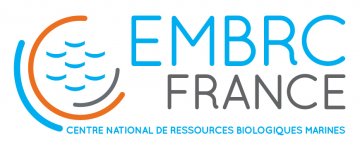[Phd Defense] Reproduction in the red alga Gracilaria gracilis: demography, biotic interactions and sexual selection.
Emma Lavaut
Myriam Valero
THE THESIS WILL FOCUS ON reproduction in the red alga Gracilaria gracilis: demography, biotic interactions and sexual selection.
The jury will be composed of :
Agnès Mignot, Professor, University of Montpellier - Rapporter
Stacy A. Krueger-Hadfield, Associate Professor, University of Alabama - Rapporter
Mathilde Dufaÿ, Professor, University of Montpellier - Examiner
Xavier Vekemans, Research Director, EPP, Lille - Examiner
Julien Gasparini, Professor, Sorbonne University, Paris - Examiner
Marie-Laure GUILLEMIN, Professor, UACH, Valdivia - Thesis supervisor
Myriam Valero, Research Director, CNRS, Roscoff - Thesis supervisor
Abstract
Red algae have a sexual life cycle, involving three types of individuals: diploid tetrasporophytes and haploid male and female gametophytes. The particularities of their reproduction are that: i) the male gametes lack a flagellum, ii) the female gametes (carpogonia) are not released and iii) after fertilization the zygote develops on the female into a complex structure called a cystocarp. In the absence of a flagellum the transport of spermatia to the female gametes is largely dependent on water movement. This thesis aims to study the consequences of this reproductive cycle on the demographic functioning of a natural population using an exhaustive spatial and temporal survey in the red alga Gracilaria gracilis, as well as the evolutionary strategies implemented to enhance the gametes encounter using experimental approaches.
First, the frequency, fertility and survival of the three types of individuals monitored over time validate the predictions of the demographic models on the maintenance of the haploid-diploid cycle and on the dynamics of this population, typical of a perennial species with a generation time of several decades. Results confirm the high survival of individuals (more than half of the individuals are still present 25 years after the first surveys) and the low demographic growth of the population. This demographic and phenological survey also allowed to highlight the presence of individuals named "life cycle variants": either haploids carrying both male and female organs, or diploids carrying tetraspores and/or male and female organs or tetrasporophytes presenting epiphytic male and female gametophytes. The evolutionary consequences that these variations (observed at a frequency of 5%) could have on the maintenance of the haplo-diplophasic life cycle are discussed and constitute interesting research perspectives. Finally, this survey of a natural population revealed the presence in high frequency of an isopod (Idotea balthica) that mimics the fronds of the G. gracilis. This animal was thus selected as a candidate model to test the transport of the male gametes to the female thallus.
Secondly, an experimental approach combined with confocal microscopy observations allowed to demonstrate the existence of I. balthica-mediated fertilization in G. gracilis. This result shows, for the first time, the involvement of biotic interactions in the dispersal of gametes of a red alga (similar to pollination in plants), a group of species for which the classical dogma was that fertilizations were only due to water movements. Moreover, this result raises questions about the origin of pollination, which could be much older than the radiation of angiosperms. This work opens new avenues for future studies to verify the widespread occurrence of this animal-mediated fertilization in red algae and to further investigate the algae-animal relationship.
Finally, among the evolutionary mechanisms that influence reproduction, sexual selection has been widely studied in animals but only rarely in plants and even less in algae. To test its importance in G. gracilis, the reproductive success and number of mates of male and female individuals were estimated through paternity analyses carried out in the natural population. Results showed that the opportunity for sexual selection is present in G. gracilis, a species where sexual dimorphism is absent. In plants, animal pollination has played a role in the coevolution of plants and insects and it is hypothesized that traits involved in pollinator attractiveness are more likely to be under sexual selection. Another new investigation opened by this thesis is to further explore this link between the role of animals and traits under sexual selection in Gracilaria gracilis, such as reproductive phenology or mucilage production during gamete release.
Key words : Idotea balthica - Animal-mediated fertilization in the sea - Haploid-diploid life cycle - Life cycle variations – Demographic and genetic survey – Bateman’s principles







